
Is the 2024 Nissan Patrol an overlooked 4WD? The Toyota LandCruiser rival might be big and bulky but here is why it's an ideal off-roader | Opinion
The Nissan Patrol is a large comfortable 4WD wagon - there's no disputing that...
Browse over 9,000 car reviews
.jpg)
Would you option safety tech if none of it was standard in your new car?
You might tick the blind spot warning option box - I mean it might only cost $150. And auto emergency braking (AEB) for $340? You’d buy that - but not with pedestrian detection, because that’ll cost more and people should be watching where they walk anyway, right?
This could be a reality if it wasn’t for local crash testing body ANCAP, which this year tallied up 30 years of crash testing and safety ratings.
The Australasian New Car Assessment Program (ANCAP) often comes under fire, sometimes rightly so. It’s our job as journalists to question, report and even offer our opinion in articles like this.
At the same time, I wholeheartedly support an organisation whose mission is to save lives. And after three decades of ANCAP it's a good moment to think about how much we need it, and consider what new vehicles would look like if it wasn't for ANCAP. But it's also a good time to look at how it could be improved.
First a bit of background.
ANCAP was founded in 1992, but it didn’t crash test its first car until the following year - a Mazda 626. Actually there were nine cars in the first lot of testing. So along with the 626 there was a Nissan Pinatara, a Toyota Camry, a Holden Commodore, a Honda Accord, a Ford Falcon, Subaru Liberty, Mitsubishi Magna and a Volvo 940GL.

Want to guess which car performed best? Yep, the Volvo. The crash test showed that the driver of every model - apart from the Volvo - would have sustained a brain injury. The reason? Well apart from structural integrity, the Volvo was the only car with an airbag.
In the introduction of the 1993 report NCAP (which is what it was called then) stated its hopes for the initiative.
“It is hoped that the influences of the program will lead to informed consumer reaction. This should lead to better safety for the vehicle occupants on Australian roadways.”

In 2023 airbags are mandatory on all new cars sold in Australia and if a car is to now score the maximum five stars in its ANCAP rating it must have a multitude of other equipment, as well as scoring highly for occupant and pedestrian protection in a crash.
Over the past 30 years ANCAP has been instrumental in setting the benchmark for car safety. In conjunction with its European equivalent EuroNCAP, ANCAP has driven car manufacturers to make safety a standard feature, regardless of the price of a vehicle.
What started off in 1993 as a 50km/h frontal crash test and a 60km/h frontal off-set crash test, evolved into higher speed tests. In 1999 the five-star rating was applied for the first time and since then the criteria for achieving the maximum score has become stricter and stricter.

A pole test was added in 2001. Head airbags were one of the new requirements for a five-star rating in 2003, then in 2008 electronic stability control was added to the must-have list.
In 2012 ANCAP required all seat belts to be three-point types throughout, then the following year seat belt reminders were included and in 2017 cars needed top tether anchor points for child seats.
And then in 2018 autonomous safety technology became the new norm with testing of AEB at all speeds and lane keeping assistance features. That same year a full-width frontal impact was introduced and child occupant safety was assessed, along with new sophisticated crash test dummies including child representations.

In 2020 far side impacts were introduced and speeds increased, mobile barriers were added to the crash tests, too, and new THOR dummies brought in.
The latest criteria that came in at the start of this year includes testing the motorcycle, pedestrian and cyclist detection ability of AEB systems, while reversing and at intersections. A car’s AEB is now also tested for its ability to prevent a head-on collision.
A car’s ability to alert emergency services if a child is accidentally left in a locked vehicle is also part of the 2023 criteria.

Like other motoring journalists I feel ANCAP could go further and do better.
Take the ANCAP score. The star rating for a car lasts six years before it’s no longer valid. This allows carmakers to advertise a vehicle as having a five-star score even if it's from half a decade ago when it’s very unlikely to achieve the maximum rating by the current year’s standards.
I’m also not a fan of how a model can adopt another model's ANCAP score - as was the case of the Kia Stonic SUV which adopted the mechanically related Rio hatchback's rating without being tested separately.

I don't agree that third-row airbags or rear collisions aren’t taken into consideration when assessing a vehicle.
But it can be easy to kick ANCAP when the effects of such an organisation can’t easily be quantified. I mean, we have no idea exactly how many lives have been saved, or how fewer injuries there have been, thanks to ANCAP. There’s no way to calculate this.
There's no tally of lives saved in a safety system that prevents a chain of events that could lead to a death. And chances are the driver will never know what a huge life-changing situation was avoided on the way to the supermarket to get more soda water.

ANCAP is the line of defence that not only keeps an ever-increasing level safety standard, but also keeps consumers informed.
The organisation isn't afraid to call out poor performance and go in hard. In the most recent ANCAP testing, the Mahindra Scorpio SUV and MG5 sedan were both given zero-star ratings.
For me as a consumer and as a father of two small children, that's a warning I would take seriously.

And it's not about country of origin, brand or price. Around the same time of testing, the Chinese-made BYD Dolphin scored five stars.
Other five-star scorers from some of the latest tests included the Kia EV9 and BMW 5 Series.
You only have to look at the images of crash tests over the decades to see how far a vehicle's structural integrity has come. Anybody who says they don't build cars as tough as they used to should compare how well the occupant cell of the new Ford Ranger held together compared to the old Ford Courier.

So who funds ANCAP? Who are the stakeholders? There are several.
The Federal Government is the main stakeholder bank rolling the body and donated $16.3 million to ANCAP in November 2023. New Zealand’s government also chips in.
The Australian State governments and the nation's motoring clubs also support ANCAP - this includes the NRMA, RACV, RACQ and the rest.

Finally the FIA, yep the Federation Internationale de ‘Automobile, the world’s motorsport governing body, is also involved.
So the government is behind ANCAP, which sits better with me than if it were car companies, banks or corporations, or anybody or anything else that might be tempted to put profit before people.
Which brings it full circle, because if it wasn’t for ANCAP, car companies wouldn’t feel the pressure or even the need to meet all the criteria required for a five-star rating.
Imagine being able to offer an entry-grade car at an incredibly low price point, one without all the safety tech. People would come into the dealership to buy a $20K SUV and be enticed into a $30K version which offers their family even more safety.
Or you could just buy the super-cheap car without the safety tech - and there would be many people who would choose to do so.
But safety tech doesn't just protect the driver - it protects everybody else on the road, too.

If it wasn’t for ANCAP many safety features would be bundled into option packages as is done with heated seats, leather upholstery and sat nav. Safety would become an option. A luxury.
That AEB is standard on almost every new car regardless of its price is testament to what ANCAP’s initial hopes were for the program.
ANCAP isn't perfect, but as any automotive engineer will tell you, perfection is always just one more change away. And ANCAP is constantly changing to save lives.
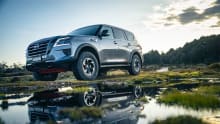

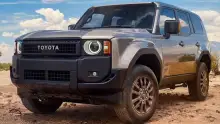

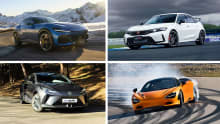
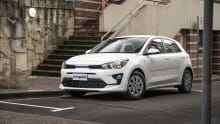
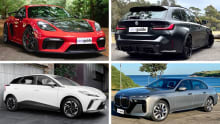

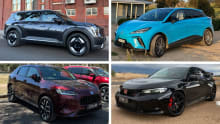
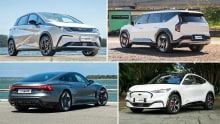
Comments